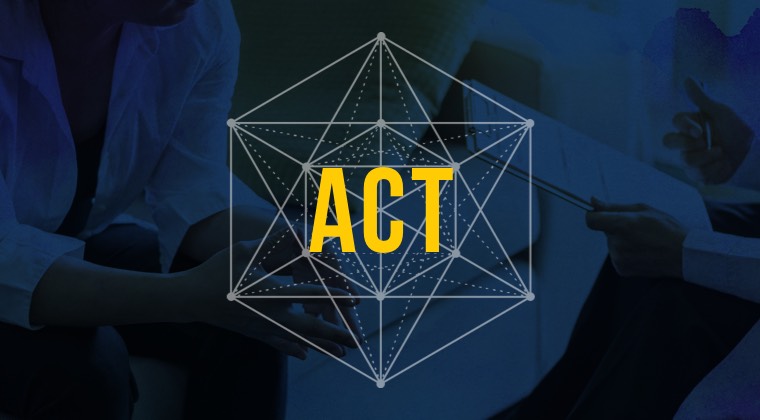Sometimes another person can help you treat your pain by guiding you in the ways that change pain processing. These skills can focus on the mind, the physical body, or both. Some of these skills are similar to self-care approaches, but they may require professional guidance. This section reviews a few of the more common professional therapies for pain management.






Cognitive-behavioral therapy
Back to topWhat is CBT?
CBT is a short-term, goal-directed form of talk therapy that addresses problems associated with chronic pain through changes in thinking, behavior, and feelings. This form of therapy has some of the strongest evidence supporting its use with chronic pain compared to other non-drug treatments. It can be obtained in either group or individual formats and typically lasts for 8–12 sessions, with occasional booster sessions every few months for maintenance of benefit.
How does CBT work?
CBT treatments exist for many illnesses including cardiovascular disease, diabetes, asthma, cancer, depression, and anxiety. The commonality of these conditions is that the goal of treatment is not to fix or cure the problem but to successfully manage it over time. When used for chronic pain, CBT helps to identify thinking and behavioral patterns that may have been helpful when pain was acute (e.g., resting, avoiding people), but are now problematic given pain is chronic (e.g., prolonged rest leads to deconditioning, avoiding people interferes with work and family responsibilities).
CBT involves a patient and a therapist, each of whom has a specific role. The patient (a) identifies problems, (b) defines goals, (c) learns skills, and (d) implements solutions. The therapist (a) listens, (b) helps refine goals, (c) teaches skills, (d) reinforces/encourages trying new approaches, and (e) personalizes skills for the individual for long-term use.
By changing behaviors that can make pain worse, and by altering thinking patterns that promote negative emotions, pain can diminish and functioning can improve.
Who can be a CBT provider?
CBT is often provided by a licensed psychologist or social worker. While many psychologists and social workers get training in CBT generally, it is recommended that you identify a therapist with advanced training in CBT for chronic pain.
CBT may also be provided by nurses, PTs, OTs or licensed professional counselors. Typically, a CBT therapist is a licensed health professional with advanced training in CBT.
CBT-related self-management skills for pain (i.e., not formal psychotherapy) however can be taught by health coaches and physician assistants and medical assistants.
Note: It is worth shopping around for a therapist with whom you can relate. Much of CBT rests upon a good therapeutic relationship between the therapist and the client.
What to expect
The first several sessions involve education and information gathering with ample time for the patient to fully tell his/her history/story of how pain started and its impact on life. The early sessions ensure that the therapist and patient share a common knowledge about how pain works within the body, agree on expectations for therapy, agree on the goals of therapy, and agree on what constitutes success/improvement.
Subsequent sessions (typically 45 minutes each) involve the therapist teaching a skill to address an issue associated with pain (e.g., sleep problems, pain intensity, negative mood, problems thinking, fatigue etc.). The skill is presented, the patient is encouraged to try the skill, and is given homework for practicing the skill between sessions. At the next session, the homework is reviewed, problems with the homework are addressed, and a new skill is introduced along with new homework. Throughout therapy, weekly monitoring of pain and function allows the patient to identify those skills that are having an impact. Near the end of treatment, the patient and therapist make a long-term maintenance plan for taking and using the most helpful skills into the future. Successful therapy is typically associated with improvements in function, decreases in pain, and confidence in using each of the skills on one's own when needed.
Potential Risks
CBT is a safe form of talk therapy for which there is minimal risk. Sometimes talking about pain can temporarily make pain seem more intense.
Resources
Many Pain Clinics will have trained CBT therapists on staff.
Association for Behavioral and Cognitive Therapies (Find a Therapist)
Website: http://www.findcbt.org/FAT/
Psychology Today (Find a Therapist)
Acupuncture
Back to topWhat is acupuncture?
Acupuncture is a component of Traditional East Asian Medicine (TEAM). It has been used as a medical intervention for over 4,000 years. The earliest records of acupuncture can be traced to the use of Bian Stones in China. These stones are believed to be used in applying pressure to specific spots on the body to promote health. Today acupuncturists use sterile thin needles that are inserted into the body to stimulate points called acupoints, along energy channels or meridians. These pathways run along the body where chi or energy flows. By stimulating the acupoints, various illness and symptoms can be treated. Once the needles are inserted, the acupuncturist may stimulate them in a number of different ways. This can be either manually with a rotation or thrusting motion, electrically with a stimulation device, or thermally with an herb called moxa that burns similarly to incense. The needles are usually retained in the body for 15–30 minutes and then removed. Needling elicits a dull achy sensation, warmth, or even an electrical propagation within the body. This is called the De Qi sensation and while not uncomfortable, it is often described as a unique sensation that most Westerners have not experienced before. Following needle removal there may be a drop or two of blood but typically the process does not elicit bleeding. Different acupoints are stimulated depending on what symptoms are being treated. Acupuncture can also be personalized to match unique symptoms and characteristics of the person being treated.
How does acupuncture work?
While acupuncture has been practiced for thousands of years, Western scientists have only studied the effects of acupuncture on animals and humans since the mid-1960s. While acupuncture has been employed historically to treat numerous medical conditions, most investigations have shown it to be useful for reducing chronic pain, decreasing anxiety, improving sleep, and reducing fatigue.
While we currently don't know how inserting acupuncture needles into specific acupoints on the body helps improves symptoms such as chronic pain, the effects are different from a simple placebo. Strong evidence supports the notion that acupuncture elicits changes in the nervous system and brain. These effects include changing the levels of chemical messengers, called neurotransmitters, which when too high or too low can be responsible for causing symptoms such as chronic pain. Acupuncture also appears to modulate cell activity in the muscles and skin, regulating certain signaling molecules. Work in the field of blood pressure has shown that not all acupoints cause the same effects in the body. Instead, specific acupuncture points appear to have unique functions that are specific to that point. The ways in which acupuncture works likely depend upon which points are being stimulated.
From a TEAM perspective, acupuncture needling simply regulates the flow of chi or energy within the body. This chi or energy is thought to flow along channels or meridians, and this can be thought of much like the motion of water in a river. If the river is either too dry or overflowing, the surrounding land can suffer. Similarly, energy flow along meridians in the body can either be deficient or in excess. Based on TEAM theory, this can lead to illness. The flow of chi or energy along the meridians can either be turned up, in cases where there is a deficiency, or reduced if there is an excess, in order to balance the flow of chi. The acupuncturist does this by inserting needles at specific acupuncture points.
How to get started with acupuncture?
Acupuncture should be provided by a licensed or registered healthcare provider. This may include a Licensed Physician or Nurse, or a Professional Licensed Acupuncturist depending on which state in the US that you live in. This individual should have advanced training in acupuncture. The main credentialing organization for TEAM in the United States is the National Certification Commission for Acupuncture and Oriental Medicine. Their website is below:
On this site, you can find a registered acupuncturist in your area using the following link:
https://www.nccaom.org/find-a-practitioner-directory/
Like other forms of healthcare treatment, having a strong rapport with your acupuncturist is important. In choosing your acupuncturist you may want to consider the following:
- Find a practitioner that takes your medical insurance. Acupuncture has been approved by Medicare and Medicaid for the treatment of low back pain. However not all acupuncturists take insurance.
- You may need to travel to your acupuncturist for multiple sessions. For chronic conditions, one treatment session may not be enough, and you may need multiple sessions to manage your symptoms.
- You may want to wear comfortable clothes so that the acupuncturist has access to your acupoints.
- Needling of the acupoints may feel warm, tingly or even achy, but it should not feel like a sharp pain.
- Do not stop in the middle of a treatment plan; it is important to attend all of your sessions.
What to expect
Sometime during the course of your treatments you may experience improvement in your main symptom. You may also find improvement in other symptoms as well. This is because TEAM is designed to treat you as a whole person, not just the part of your body where you have your main complaint such as pain. After you complete your initial treatment sessions, you may be able to stop doing acupuncture and maintain good pain control as well as stable reductions in your other issues. If your symptoms worsen, feel free to go back to doing acupuncture and also consider doing self-acupressure as a safe, easy to learn intervention that works similar to acupuncture but does not use needles. Different people have different reactions to these treatments – find what works for you.
Potential Risks
Acupuncture is generally considered very safe. Occasionally people can experience bruising at acupoint sites or slight bleeding. If bruising or bleeding occurs consider taking a few days off from doing acupuncture or ask the clinician not to insert needles where there is bruising or where bleeding may occur. If bruising or bleeding persists, stop doing the acupuncture – it may not be right for you.
Acceptance & commitment therapy (ACT)
Back to topWhat is ACT?
ACT is an evidence-based talk therapy that addresses problems associated with chronic pain by helping individuals think and act differently with respect to pain. ACT focuses on helping patients to reduce pain-related distress through increasing engagement in valued behavior. ACT provides skills that help patients learn to accept pain and focus upon improving quality of life despite pain. ACT can be performed both individually and in groups. Treatment is often short term (8–12 sessions) with follow-up as needed. ACT has strong evidence for reducing pain-related distress.
How does ACT work?
ACT focuses on the development of a rich and meaningful life despite pain. ACT interventions address universal sources of human suffering. Sometimes pain cannot be "fixed", thus ACT attempts to manage distress instead of trying to get rid of it. ACT theory is based on the notion that distress is an unavoidable component of humanity; often, attempts to avoid distress can lead to increased suffering.
The goal of ACT is working to increase acceptance of things outside of one's control and increasing movement towards things that are valued. While the goal of ACT is not specifically to reduce chronic pain, evidence supports its efficacy for several outcomes, including increasing quality of life, decreasing distress, and decreasing mood symptoms, among other benefits. Reductions in these sources of distress often lead to patients reporting decreased pain and decreased distress related to pain. ACT may also include training in techniques which have been shown to be effective for treatment of chronic pain in other contexts, including mindfulness, relaxation, cognitive defusion, and education.
ACT involves a patient and a therapist who each have a specific role. The patient (a) identifies problems, (b) defines goals, © learns skills, and (d) implements solutions focusing on reducing control and increasing behavior in line with their values. The therapist (a) listens, (b) helps refine goals and clarify patient values, (c) teaches skills, frequently using metaphors and stories, (d) encourages use of new skills, and (e) provides treatment focusing on long-term use.
By accepting things that cannot be controlled (e.g. pain), the therapy focus can shift towards increasing valued behavior and quality of life. When patients have a high quality of life, pain is less influential, consequential, and patients report less pain-related distress.
What other names might this go by?
ACT (pronounced like the word) is a form of psychotherapy that is typically practiced by a trained mental health professional. ACT based skills have however been implemented into a number of platforms including self-help books, websites, and support groups. ACT was developed though Relational Frame Theory, which is a term that is sometimes used in describing treatment. Training in mindfulness is a component of ACT based treatment. Multiple additional interventions utilize mindfulness but may not be related to ACT.
ACT and other forms of therapy including Cognitive Behavioral Therapy (CBT) and Emotional Awareness and Expression Therapy (EAET) may share some techniques or processes – see the CBT and EAET sections for more details.
Who can be an ACT provider?
ACT should be provided by a licensed mental health provider, which may include a Licensed Psychologist, Social Worker, or Professional Counselor. Typically, ACT is provided by an individual who has advanced training in ACT.
The principles of ACT may also be incorporated into other forms of care, including Interdisciplinary Treatment, Physical Therapy, Occupational Therapy, Medial Treatment, and Health Coaching. These skills are often provided informally while participating in other forms of treatment.
Like other forms of mental health treatment, having a strong rapport with your ACT provider is extremely important for effective treatment. While there may be fewer ACT trained clinicians to choose from, individuals with pain are encouraged to seek a provider with whom they feel they can have a good relationship.
What to expect
ACT treatment typically starts with a formal assessment in which the patient is asked questions related to the presenting problem, reason for seeking treatment, history, and any additional relevant information. This allows the patient to provide information about why they are seeking treatment. In the first several sessions the therapist and patient will get to know one another. Specific time will likely be spent processing the impact of pain upon the patient's life.
Early on in treatment it is likely that the topic of values will be explored, including a discussion of the impact of pain upon valued behavior. The patient and therapist will work to develop collaborative goals for treatment, typically focused on increasing function and improving quality of life. Time will also be spent working to identify what would be considered signs of progress.
ACT based treatment typically focuses on improving function and increasing valued behavior versus focusing primarily on symptom reduction as measures of improvement.
In many sessions the therapist may provide education on ACT based skills. These skills will likely be presented to address a pain-related concern. ACT-based treatment is likely to focus on exploring current patterns of thinking and behavior related to pain. A fundamental goal of ACT-based treatment will be to identify and accept sources of distress that are outside of a patient's control. Patients are likely to have education in the use of mindfulness and relaxation skills. Treatment will also work to increase action toward valued behavior. Patients will be asked to attempt to implement skills discussed in treatment and are likely to receive homework from their therapist. This homework is often reviewed in session, with time spent discussing use of skills, and adapting skills as needed. In addition to specific ACT-based skills, patients are likely to receive skills for addressing other important aspects of pain such as sleep, mood, and stress management. Success in treatment is associated with improvements in function, increased confidence in the patient's ability to manage pain, increasing valued behavior, and decreased pain-related distress. ACT treatment is typically performed once a week in outpatient settings, with sessions lasting 45–55 minutes.
Potential risks
ACT is a safe form of talk therapy for which there is minimal risk. Sometimes talking about physical or emotional pain can be difficult and make pain or distress more intense for a short period of time.
Resources
Association for Contextual Behavioral Science:
https://contextualscience.org/civicrm/profile?gid=17&reset=1&force=1
Association for Behavioral and Cognitive Therapies (Find a Therapist)
Website: http://www.findcbt.org/FAT/
Psychology Today (Find a Therapist)
Physical therapy
Back to topPhysical therapy is a healthcare specialty that works with patients to help them improve their physical abilities such as their ability to move. The physical therapist works with each patient to develop an individualized treatment program, set specific goals, and determine which techniques will be most effective for successfully achieving goals for physical functioning. Individualized treatment plans often include education about the specific condition, and how it relates to daily function for the patient. Also included are specific exercise programs within each therapy session as well as exercise to perform at home. Hands-on techniques, referred to as Manual Therapy, may also be included during treatment sessions to accelerate the success of the exercise programs. Occasionally, there is a need to utilize modalities such as ultrasound, electrical stimulation, hot packs, and cold packs, among others to reduce pain, and improve one's ability for movement. Physical therapists treat patients across the age span, and specialize in many areas. Regardless of your age or impairment, if you have mobility issues, a physical therapy evaluation may be required.
What to expect
Through personal interview and individual testing, physical therapists will review your state of health related to your musculoskeletal system (e.g., joints, bones, muscles), neurological system (e.g., reflexes, coordination, balance), as well as your cardiopulmonary function (e.g., heart, lungs, circulation). Testing for these areas can be as simple as answering a question, walking on a treadmill, or touching your toes. Gentle manipulation by the therapist of a joint to better assess the primary limitation may also be necessary. Treatment sessions last between 30–60 minutes depending on the location and the issues being addressed. Sessions will almost always include exercise, so be sure to wear clothes you can easily move in.
Potential Risks
As with any exercise program, there are risks of overdoing it which could exacerbate pain. However, effects are often short-term and can be resolved using techniques such as heat, cold, and massage.
Occupational therapy
Occupational therapy works with patients to help them increase their ability to perform daily tasks and participate in life roles, which includes roles at home and at work. Treatment programs will vary depending on functional limitations, severity, and goals identified in conjunction with the patient. Occupational therapy may include instruction in postures and body mechanics for sitting, sleep, home management, child/dependent care and work task performance. Additionally, a therapist may help you determine how much, and what type of activity you should do on a given day, using activity pacing, energy conservation and work simplification strategies. Computer postures and ergonomics for workstation set-up may be addressed, or recommendations may be made with regard to work restrictions.
What to expect
Through interview and movement assessment, specialists (Occupational Therapists) will examine and evaluate your needs and also take into consideration your medical history and physical condition. After the evaluation, the occupational therapist determines what treatment program works best for you, based on the identified goals. It may include exercises, instruction of how to move using proper body mechanics and postural training, development of a daily/weekly schedule to improve your level of function, and assessment of your work environment to improve your approach to work activity. You may also learn how to avoid pain flare-ups.
Emotional awareness and expression therapy (EAET)
Back to topWhat is EAET?
Emotional Awareness and Expression Therapy (EAET) is a form of psychological therapy that targets the trauma, stress, and relationship problems that are found in many people with chronic pain, especially "centralized" (central sensitization, central augmentation) pain. Although all chronic pain is influenced by psychosocial factors, centralized pain conditions appear to be strongly influenced by the functions of the central nervous system, especially the brain's thoughts, feelings, and relationships. Such pain conditions include most cases of fibromyalgia, irritable bowel syndrome, pelvic pain, temporomandibular pain, head pain, and many cases of back or other localized pain. Research shows that stress throughout people's lives and how they handle the emotions from that stress, can trigger, worsen, or maintain their pain. Most psychological treatments for these pain conditions, including traditional Cognitive Behavioral Therapy (CBT) and Acceptance and Commitment Therapy (ACT), do not focus on helping people resolve these earlier life stressors, but this is the focus of EAET. This form of therapy is rather new, and so only a handful of clinical trials have been published testing it. Many case reports suggest that EAET can be quite powerful, even leading to the remission of pain in some people.
How does EAET work?
EAET can be conducted in individual or group sessions, and studies thus far have tested EAET protocols that range from a single, 90-minute session to 8 group sessions. It is likely, however, that more sessions are needed for many patients, because this therapy tries to address problems that are often long-standing in people's lives. Unlike CBT, which seeks to help people manage their pain and improve their adjustment to a chronic condition, EAET views centralized pain as potentially reversible if the person makes powerful changes in their emotions and relationships. EAET involves four components. First, patients are educated about the role of stress and emotions in their pain by using examples from their lives and demonstrations during intensive interviews. Second, patients are helped to disclose and talk or write about the traumas and psychological conflicts in their lives that appear to drive their pain. Third, patients are helped to express the emotions that they have been avoiding or blocking related to trauma or stressors, especially their anger but sometimes also their sadness, guilt, love, and self-compassion. Finally, given the newfound awareness of their feelings, patients learn how to communicate more effectively in real relationships by balancing assertiveness and healthy boundaries with openness and closeness. When patients are able to make these changes, they commonly have substantial pain reduction and their mood, physical functioning, and relationships will also improve.
What other names might this go by?
EAET borrows from other therapies that help people resolve trauma and psychological conflicts, including Prolong Exposure Therapy, Intensive Short-term Dynamic Therapy (ISTDP), Emotion-focused Therapy, Written Emotional Disclosure, and Rescripting Therapy. A common process of all of these therapies is that they offer support in helping patients face their traumas and conflicts, become aware of their feelings, experience their emotions, and express them in adaptive ways. These therapies, as well as others designed for trauma (e.g., Eye Movement Desensitization and Reprocessing and Cognitive Processing Therapy), are supported by research as being helpful to people who have post-traumatic stress disorder, and recent research supports many of these treatments for people who have chronic pain and trauma symptoms.
Who can be an EAET provider?
Because EAET is rather new, there are few providers who have been trained specifically to deliver it. However, many psychologists and other mental health providers have training in trauma-focused therapies and "exposure-based" therapies that help patients overcome their fears. Such therapists may be able to provide EAET-like interventions for patients, especially when patients openly discuss with these therapists that working on their avoided emotions and troubled relationships is what is needed.
There are also a number of self-help books that focus on dealing with stress and emotions underlying chronic pain and that help patients make important changes in their lives to reduce their pain. Authors of such books include John Sarno, Howard Schubiner, David Clarke, David Schechter, David Hanscom, and Nancy Selfridge. As noted under 'Resources' below, there are also apps designed to help patients address their emotions and reduce their pain, as well as a free internet-based Pain Recovery Program. The Psychophysiologic Disorders Association is the main professional organization of practitioners and scholars who use EAET and related approaches for chronic pain, and the Tension Myositis Syndrome (TMS) Wiki also provides numerous resources for patients and practitioners.
What to expect
The first several sessions usually involve learning about patients' health and psychosocial history, including stresses or traumas that have been experienced. The therapist will help patients see links between their pain and their emotional life experiences. Therapy has patients revisit important conflicts or traumatic experiences that involve other people and helps patients "express the unexpressed" feelings to those people. This can be done with writing exercises but also involves "talking to" an empty chair where the imagined other person sits. Patients are encouraged to activate and express their emotions fully, using their words, voice tone, and bodily expression (arms, face). Patients are helped to express the full range of avoided emotions, including anger, sadness, love, guilt, and self-compassion. Relief and some reduction in pain is usually felt after doing such exercises, but patients often need to do this "experience and expression" work several times. Finally, patients are encouraged to plan and role play how they would like to be in real life with people who have been a source of stress or conflict. Such communication depends on the type of relationship and may involve healthy assertiveness and setting boundaries, and often includes being open, vulnerable, and expressing intimacy. Throughout therapy, patients are encouraged to work on emotional awareness, writing exercises, emotional expression, and healthy communication as homework. Successful EAET is typically associated with substantial reductions or even elimination of pain as well as improvements in functioning, mood, and relationships.
Potential Risks
EAET and related approaches are associated with greater risk than CBT and ACT and other psychological treatments for chronic pain. EAET encourages patients to disclose and emotionally express experiences and feelings that may have been avoided for many years and that often are quite upsetting. It is not uncommon, therefore, for patients to become temporarily more upset (e.g., anxious, depressed, angry) as they start to deal with memories and feelings that have long been avoided. Pain and other physical symptoms sometimes increase temporarily. Because patients are encouraged to communicate and interact differently in their relationships, these relationships might change in ways that are unexpected. Practitioners of EAET believe, however, that such emotional and relationship changes are important to make, and even though they may be difficult in the short run, such changes can be healthy and lead to pain reductions in the longer-term. EAET, however, may not be appropriate for certain patients, especially those who have difficulties regulating their emotions, who dissociate or have trouble thinking when they are emotional, or who tend to hurt themselves or others when memories or feelings are activated or intense.
Resources
Psychophysiologic Disorders Association Website: https://ppdassociation.org
Tension Myositis Syndrome Wiki (TMS Wiki), including its link to Alan Gordon's Pain Recovery Program; Website: www.tmswiki.org
Unlearn Your Pain (3rd Edition) by Howard Schubiner
Massage & spa therapy
Back to topA clinical massage helps relieve pain or tension on a specific part of the body. A physician will refer you to get these massages with the intention to improve a specific condition. In a spa setting, there is no clear goal because the spa treatment is more general. The therapist tries to relax and relieve stress from the patient and is not trying to heal a specific condition.
What to expect
During a spa visit you will receive basic therapy focused on relaxation. While a spa massage may relax and relieve stress, a medical massage can help to achieve specific targeted outcomes. Though outcomes can vary, medical massage is done to address a specific medical target and can provide some benefits for chronic pain sufferers who can tolerate massage techniques. Most benefits are short term and there is limited evidence that massage produces lasting effects on chronic pain.
Potential risks
Side effects may include temporary pain or discomfort, bruising, soreness, swelling, and a sensitivity or allergy to massage oils.


